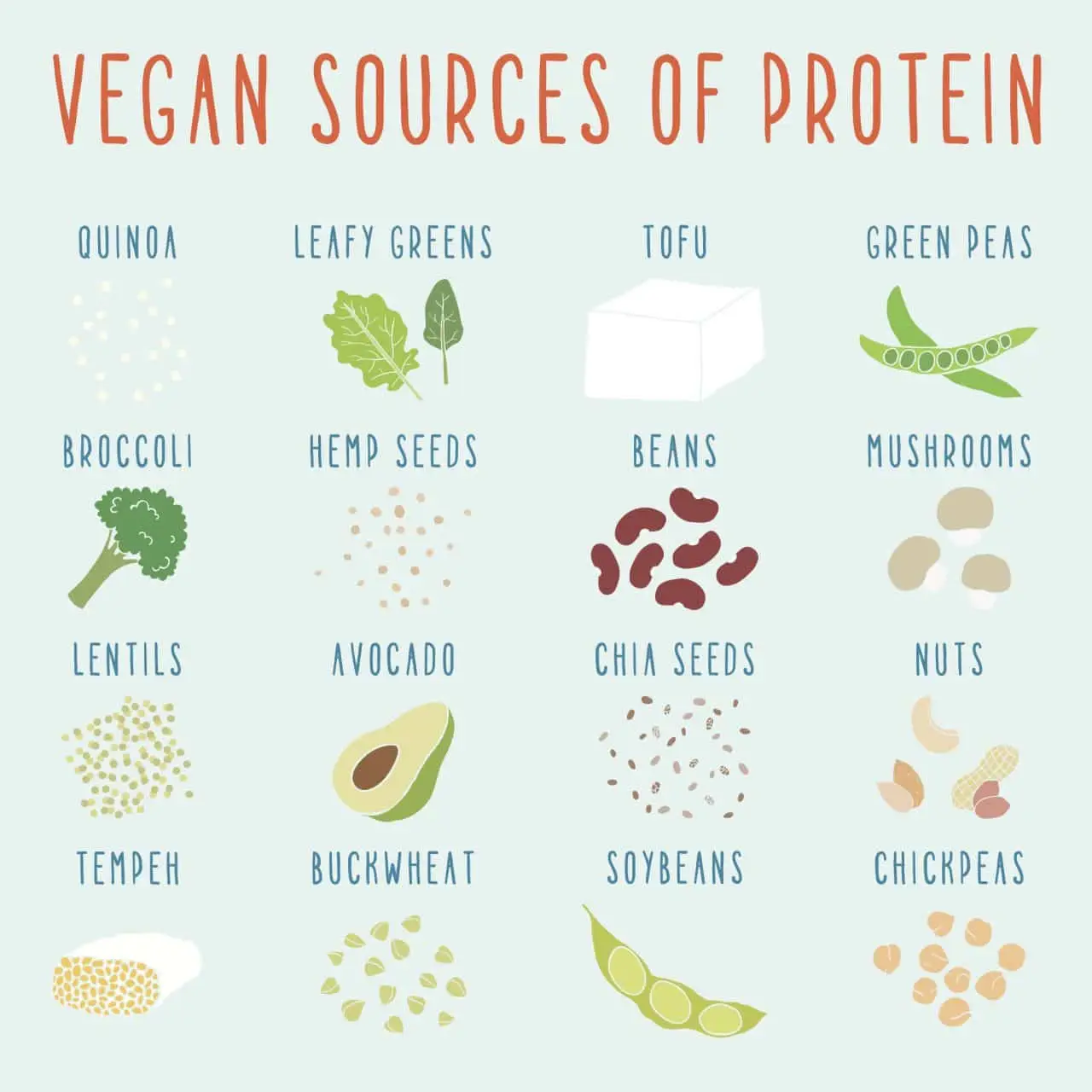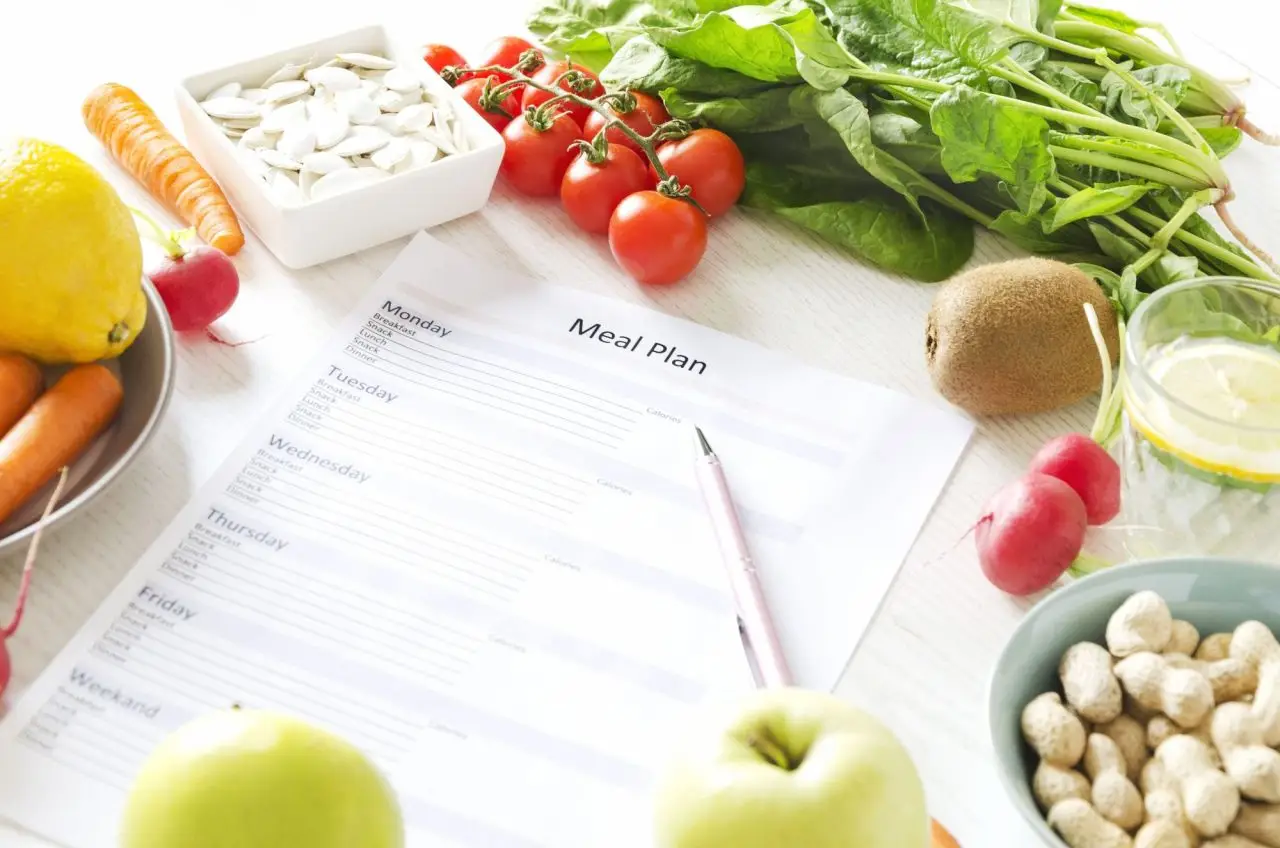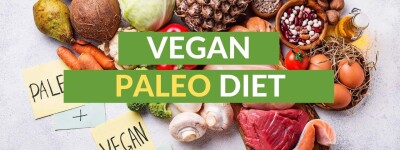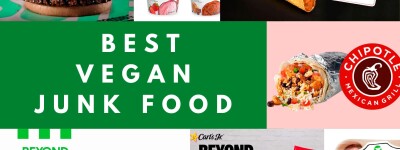The Ultimate Guide to the Vegan Keto Diet
The keto diet has taken the world by storm. You can barely go a day now without some stranger telling you they’re on keto. But what is keto? Why is it so controversial? Can vegans do keto? Is it safe? And what exactly would a vegan keto diet look like?
What is a vegan keto diet? Vegan keto is a low-carb, high-fat diet that excludes all animal foods. Much like the regular keto diet, it is used for rapid weight loss. It may also have some other health benefits including such as a lower risk of heart disease, high blood pressure, and obesity. Research on vegan keto is very limited at this time.
I have created this ultimate guide to vegan keto to help simplify the information for you. I’ll take a look at the legitimacy of the vegan keto diet and see whether it’s worth doing. So, let’s begin our vegan keto journey together!
- What is the Keto Diet? (A Quick Overview)
- So…What is the Vegan Keto Diet?
- Vegan Keto Food List
- Foods to Avoid
- How to Limit Your Carbs
- Best Sources of Vegan Protein on Vegan Keto Diet
- Vegan Alternatives to Keto foods
- Vegan Keto Diet Meal Examples
- Risks and Downsides of the Vegan Keto Diet
- How to Thrive on the Vegan Ketogenic Diet
What is the Keto Diet? (A Quick Overview)

What the hell is vegan keto? First, let’s quickly look at what a keto diet is in general. A keto diet is a low-carb, high-fat diet that potentially has some health benefits.
Many studies now suggest that keto can effectively help you to lose weight and improve your health. Some studies even suggest that keto could reduce your risk of developing diabetes, cancer, epilepsy, and Alzheimer’s disease.
Keto is very similar to Atkins and other low-carb diets. You drastically reduce the number of carbs in your diet and replace them with fat. Yes, fat! Bare with me on this one.
The reduction of the carbs in your diet forces your body into ketosis. This makes your body incredibly efficient at burning fat for energy. The keto diet massively reduces your blood sugar and insulin levels. This is why so many diabetics love keto.
So, you eat low carbs and high fat. You force your body into a state where you burn fat for energy, and then any fat you eat is burned at a rapid rate. This helps you to lose weight plus many other health benefits.
So…What is the Vegan Keto Diet?
The vegan keto diet is just like the regular keto diet minus the animal foods. So you’re still eating low carbs and high fat. Instead of getting fat from animal meats and dairy, you get your fats plant-based meats, mushrooms, nuts, seeds, avocados, and more.
Some Rules for Vegan Keto Diet
- Limit carbs to 35g per day
- Eliminate all animal products (obviously)
- Eat lots of low-carb veggies
- Try to aim for 70% of your calories from plant-based fats
- Aim for 25% of your calories from plant-based protein
- Supplement with essential nutrients (vitamins D3, B12, & B6, DHA & EPA, iron, zinc, calcium)
- Use a calorie/nutrient calculator such as My Fitness Pal or Cronometer to track your carbs, protein, and fat intake daily.
Simple, right? Well, not really. If you want to go on the vegan keto diet, you must be consistent and self-disciplined. Otherwise, you will not reach a state of ketosis, and the diet will not work correctly.
You must stay on track with this diet for it to work. Like all diets, really!
Vegan Keto Diet Benefits
There are several potential health benefits for those who follow a vegan keto diet. But, at this moment in time, no specific studies are backing a vegan keto diet.
- Lower risk of heart disease, diabetes, and various cancers
- 75% lower risk of developing high blood pressure
- Weight loss (average of 2.52kg compared to non-vegan diets)
- Keto dieters lose more weight and quicker than those on low-calorie diets
- Healthy blood sugar regulation
- Higher levels of adiponectin (a protein that helps with fat metabolism)
- Adiponectin is associated with reduced inflammation, lower risk of obesity, and reduced risk of heart disease
- Keto diets have been shown to reduce heart disease risk factors like high triglycerides, blood pressure, and “bad” LDL cholesterol.
Both vegan diets and keto diets have been found to have lots of health benefits. Therefore, it is likely that when combining the two, you would also see some positive results. Many vegan keto dieters claim to be benefiting from their chosen diet.
Vegan Keto Food List

You can find a fully comprehensive list of vegan keto foods you can eat here. I have provided a shortlist of the main foods below.
- Avocado and mixed berries – raspberries, blackberries, and other low glycemic impact berries
- Fermented foods — Miso, sauerkraut, kimchi, etc.
- High-fat dairy alternatives – coconut cream, vegan cheeses, coconut-based yogurt (unsweetened), etc.
- Mushrooms — shiitake, king oyster, lion’s mane, etc.
- Nuts and seeds – pistachios, almonds, sunflower seeds, pumpkin seeds, etc.
- Other fats – coconut oil, olive oil, MCT oil, avocado oil, etc.
- Sea vegetables — dulse, bladderwrack, kelp, etc.
- Sweeteners – stevia, erythritol, monk fruit, and other low-carb sweeteners >
- Vegan “meats” — tempeh, tofu, seitan, and other high-protein, low-carb vegan “meats.”
- Vegetables – Broccoli, cauliflower, zucchini, spinach, kale, etc.
Foods to Avoid
Entering ketosis is much harder than people think. This is one of the significant downfalls of such a restrictive diet. To help stay on track, you will want to avoid all the following foods on your vegan keto diet:
- Fruit – apples, bananas, oranges, etc.
- Gelatin – sweets, candy, etc.
- Grains – wheat, pasta, corn, rice, cereal, etc.
- High-carb nuts (chestnuts, cashews, pistachios)
- Legumes — lentils, black beans, peas, etc.
- Meat, fish, poultry, dairy, eggs, other animal products
- Partially hydrogenated oils (trans fats)
- Refined vegetable oils
- Starchy Veg – potato, yams, etc.
- Sugar – refined, cane, corn syrup, honey, agave, maple syrup, etc.
How to Limit Your Carbs
You may have read that list and thought, “oh my god, so I can’t eat potatoes? That’s my favorite food!”. Sorry guys, no potatoes. At first, this change in diet may be difficult, and you may feel hungry.
But don’t worry, it will get easier as you get used to it. It is imperative that you limit your carbs as per the vegan keto diet rules (35g per day). Failure to do this will stop you from entering ketosis, and you won’t benefit from all your hard work.
To help limit your carbs. Try focusing on low-carb snacks to help you get through the day. Nuts are a great way to get energy, feel full, and only incur a few carbs. Think about eating the following:
Based on 28g serving.
- Almonds – 6g of carbs
- Peanuts – 6g of carbs
- Macadamia nuts – 4g of carbs.
- Hazelnuts – 5g of carbs
- Pecans – 4g of carbs
- Walnuts: 4g of carbs
Instead of using sugar to sweeten your drinks, try an alternative like stevia, erythritol, or xylitol. Stevia helps lower blood sugar levels. Erythritol will not raise blood sugar levels or insulin levels. Xylitol may reduce insulin resistance.
Say no to the potatoes! When confronted with the choice of getting fries or any type of potato, just say no! Instead, opt for a plate of grilled veggies or a salad. The same for pasta, bread, biscuits, or rolls.
Swap out your wheat flour for low-carb flour. Wheat is high in carbs and is the most common type of flour used in food products. Instead, choose flour made from nuts or coconut. Almond flour has 11g of carbs per 100g, and coconut flour has 21g of carbs per 100g.
Best Sources of Vegan Protein on Vegan Keto Diet

Vegan protein is not as difficult to find as you may think. There is a lot of confusion surrounding vegan protein sources. One of the many criticisms of the vegan diet is a lack of sufficient protein. But, this is a misconception.
Below, are some high protein plant-based foods that you can eat on a vegan keto diet:
Protein per 100g.
- Tempeh – 19g
- Tofu – 9g
- Edamame – 11g
- Lentils – 9g
- Chickpeas – 19g
- Peanuts – 26g
- Almonds – 21g
- Spirulina – 57g
- Mycoprotein (Quorn) – 11g
All of the above foods are easy to acquire and offer exceptional levels of protein. As you can see, spirulina is by far the best source, but you would never eat 100g of spirulina in a day. But, you should add a tablespoon to your smoothie for a boost.
With the nuts, you wouldn’t want to eat 100g per day, but a few handfuls a day will give you a good boost of protein. Mycoprotein is what makes Quorn, they have a wide range of fabulous vegan products to choose from. This includes nuggets, fillets, fishless fingers, and burgers.
Vegan Alternatives to Keto foods
On the standard keto diet, you would focus on animal foods such as meat and dairy. Thankfully, for those who want to be vegan keto, there are tons of great vegan alternatives available.
Meat Alternatives
There are thousands of high protein vegan meat alternatives available in supermarkets. Here are my favorites:
- Gardein
- Beyond Meat
- Tofurkey
- Field Roast
- Yves Veggie Cuisine
- Lighlife
- Sweet Earth Natural Foods
- MorningStar Farms
Before purchasing any products from these brands, double-check the ingredients and nutrient profile. Each brand has a wide range of products. Ensure there are no sugars or carbs lurking in them that might catch you out.
Dairy Alternatives
If you’re going from a non-vegan diet to vegan keto, I would suggest just trying a regular vegan diet. This way, you can get a feel for the diet, experiment with the foods you like, and get comfortable with it.
For those that are jumping straight into vegan keto, here are some dairy alternatives to try.
- Oat Milk
- Coconut cream
- Coconut oil or vegan butter
- Vegan cheese (Daiya and Violife are good)
- Vegan soft cheese
- Coconut yogurt
- Nut-based yogurt
Vegan Keto Diet Meal Examples

To make things easy, I have devised a small meal plan for vegan keto. This is just an example, but you can create your own and discover more online. After a few weeks, you should be able to create your own!
A Vegan Keto Sample Meal Plan
Monday
- Breakfast: Keto vegan overnight oats.
- Lunch: Vegan cream and low-carb vegetable soup.
- Dinner: Veggie rice stir-fry with tofu.
Tuesday
- Breakfast: Tofu scramble with tomatoes and avocado.
- Lunch: Zucchini noodles with vegan pesto and vegan cheese.
- Dinner: Cauliflower Steaks with salsa
Wednesday
- Breakfast: Chia pudding with almonds
- Lunch: Veggie lentil soup
- Dinner: Noodles with mushrooms and coconut cream
Thursday
- Breakfast: Keto vegan overnight oats.
- Lunch: Tofu veggie coconut curry.
- Dinner: Vegan Greek Salad with Mushroom Souvlaki
Friday
- Breakfast: Coconut yogurt topped with nuts and seeds
- Lunch: Cauliflower soup
- Dinner: Eggplant lasagna made with vegan cheese.
Saturday
- Breakfast: Vegan keto smoothie
- Lunch: Instant pot vegetable soup
- Dinner: Cauliflower fried rice
Sunday
- Breakfast: Coconut almond chia pudding.
- Lunch: Big tempeh salad with seeds and avocado.
- Dinner: Spicy garlic soy tofu
Risks and Downsides of the Vegan Keto Diet
The vegan keto diet is not plain sailing. Here are some of the possible risks associated with the vegan keto diet and some downsides.
It’s Difficult to Manage
Many people quit before they really get started. Remember, this is a very restrictive diet that demands a lot of self-discipline and consistency. Failure to follow the diet correctly will have little positive results.
It’s Not Long-Term
Because it’s so restrictive and difficult to manage, you can’t go vegan keto long-term. If you do go long-term, there are no studies to tell us what may happen to your health.
Right now, we have research that suggests the diet is safe for up to two years, but this is based on a standard keto diet, not vegan keto.
There May Be Health Risks
Some health risks that are associated with a keto diet include:
- Constipation
- Increased risk of heart disease due to too much saturated fat
- Kidney stones
- Low blood pressure
- Nutritional deficiencies
It’s Not Suitable Everyone
Pregnant women and those who are breastfeeding should not follow a keto diet. You will not get sufficient amounts of nutrition to take care of yourself and your baby.
Also, people who have any of the following health issues should avoid vegan keto:
- Eating disorder
- Diabetes
- Gallbladder issues
- Liver problems
- Pancreas problems
- Thyroid disorders
“Keto Flu”
Keto flu is the name given for the experienced you may have when moving your body into ketosis. Symptoms include:
- Loss of focus
- Dizziness
- Mild headaches
- Lethargy/low energy
- Mood swings
- Muscle cramping
- Sleep issues
- Upset stomach, including nausea and diarrhea
- Feeling of weakness
Nutrient Deficiencies
It can be hard to get sufficient amounts of essential nutrients when following a restrictive diet like vegan keto. Calcium, iron, omega-3, B12, vitamin D, and zinc are all possible deficiencies.
Make sure you take a vegan multivitamin to supplement your vegan keto diet.
How to Thrive on the Vegan Ketogenic Diet
Ok, so enough of the risks and downfalls. How can you actually thrive on a vegan keto diet?
- Limit carbs to 35g per day
- Eliminate all animal products (obviously)
- Eat lots of low-carb veggies
- Try to aim for 70% of your calories from plant-based fats
- Aim for 25% of your calories from plant-based protein
- Supplement with essential nutrients (vitamins D3, B12, & B6, DHA & EPA, iron, zinc, calcium)
- Use a calorie/nutrient calculator such as My Fitness Pal or Cronometer to track your carbs, protein, and fat intake daily.
- Limit carbs to 35g per day
- Eliminate all animal products (obviously)
- Eat lots of low-carb veggies
- Try to aim for 70% of your calories from plant-based fats
- Aim for 25% of your calories from plant-based protein
- Supplement with essential nutrients (vitamins D3, B12, & B6, DHA & EPA, iron, zinc, calcium)
- Use a calorie/nutrient calculator such as My Fitness Pal or Cronometer to track your carbs, protein, and fat intake daily.
Eat the Right Foods
Second, make sure you’re eating the right foods, as discussed in this article. Aim to buy organic wherever possible.
- Avocado and mixed berries – raspberries, blackberries, and other low glycemic impact berries
- Fermented foods — Miso, sauerkraut, kimchi, etc.
- High-fat dairy alternatives – coconut cream, vegan cheeses, coconut-based yogurt (unsweetened), etc.
- Mushrooms — shiitake, king oyster, lion’s mane, etc.
- Nuts and seeds – pistachios, almonds, sunflower seeds, pumpkin seeds, etc.
- Other fats – coconut oil, olive oil, MCT oil, avocado oil, etc.
- Sea vegetables — dulse, bladderwrack, kelp, etc.
- Sweeteners – stevia, erythritol, monk fruit, and other low-carb sweeteners
- Vegan “meats” — tempeh, tofu, seitan, and other high-protein, low-carb vegan “meats.”
- Vegetables – broccoli, cauliflower, zucchini, spinach, kale, etc.
Follow a Meal Plan
Create and follow a strict meal plan. This will help you to stay on track and not get caught out during the day. Each week, buy all the ingredients you need for the week, so you’re never without food.
The internet is full of vegan keto meal plans and recipe ideas. Check out Pinterest and Google for inspiration.
Get Support
Having people to speak to and guide you can help a lot. Join online communities on social media and talk to others who are also on vegan keto. Ask them questions, ask for recipes, and ask for advice.



Spelling error report
The following text will be sent to our editors: